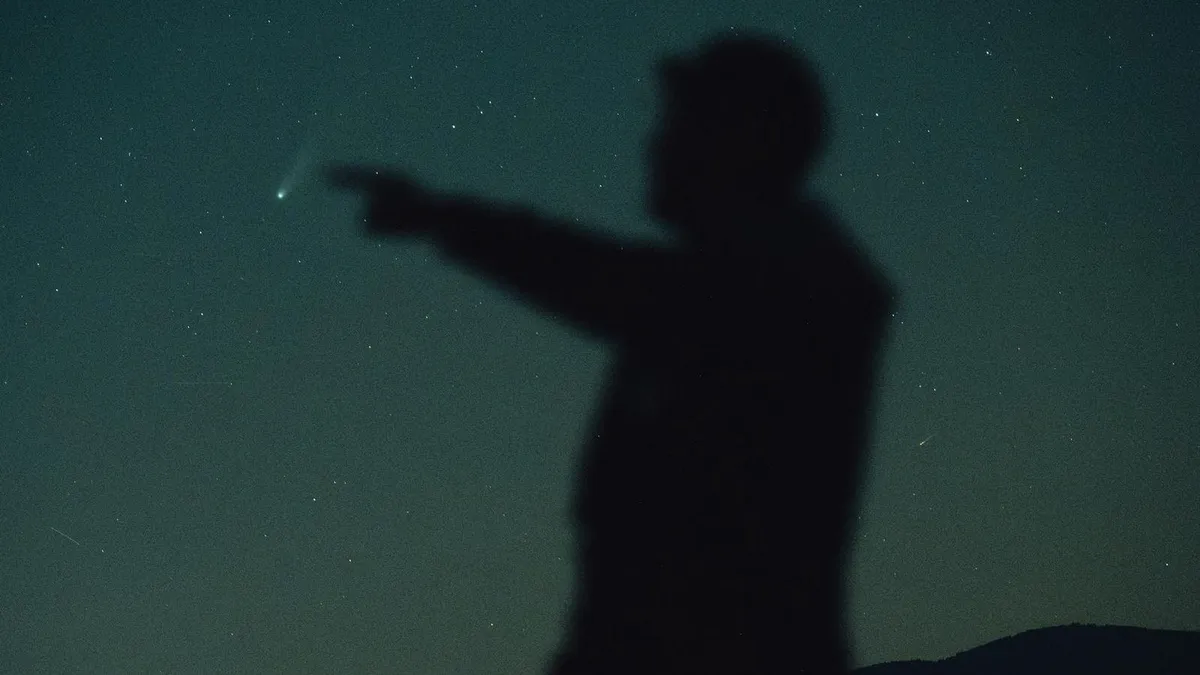
Topline: Skywatchers in the Northern Hemisphere are in for a treat as two green comets continue to illuminate the twilight sky. On Friday, October 24, the vibrant Comet Lemmon (C/2025 A6) travels westward through the constellation Boötes in the northwest, while the fainter Comet SWAN (C/2025 R2 (SWAN)) can be spotted below the bright stars of the Summer Triangle in the southwest. This represents one of the best remaining opportunities to see these comets, as they are gradually moving away from Earth. Additionally, a 10%-lit waxing crescent moon will soon brighten the sky, making the comets harder to observe later in the week.
The optimal time to view Comet Lemmon and Comet SWAN on Friday, October 24, is during a 30-minute window that begins approximately 90 minutes after sunset in your location. Both comets will be visible post-sunset but will occupy opposite areas of the sky—Lemmon in the northwest and SWAN in the southwest. For residents of New York City, where sunset occurs at 5:59 p.m. EDT, the best time for evening viewing is between 7:29 p.m. and 7:59 p.m. EDT. During this time, the waxing crescent moon will be sinking low in the southwest, allowing for dark skies that are ideal for observing both comets.
Distance from the sun: 59.2 million miles (95.2 million kilometers)
Distance from Earth: 57.1 million miles (91.9 million kilometers)
To locate Comet Lemmon after sunset on Friday, October 24, look for it positioned to the upper left of the bright star Arcturus, which will be low on the northwest horizon. Begin by tracing the stars in the curved handle of the Big Dipper and follow the arc to Arcturus. From there, move a couple of degrees above Arcturus to find the next bright star, Izar. Comet Lemmon will appear about four degrees to the right of Izar and four degrees below Alphecca in the constellation Corona Borealis. In New York, the comet will be approximately 20 degrees above the northwest horizon at 7:29 p.m. EDT, gradually descending as twilight progresses.
Distance from the sun: 98.1 million miles (157.9 million kilometers)
Distance from Earth: 26.1 million miles (42 million kilometers)
The bluish-green Comet SWAN will also be observable with binoculars on Friday, October 24, positioned low in the southern sky after sunset. It will be located in the constellation Aquila, just above the famous Teapot asterism in the constellation Sagittarius, and to the left of the bright star Altair in the Summer Triangle. Depending on your location, the comet's height above the horizon will vary, but in New York, it will be approximately 43 degrees high as it becomes visible. Both comets will remain visible for a few more evenings, but as the weekend approaches, bright moonlight will start to obscure them.
Stay updated with my daily feed throughout the month for a dedicated “comet tracker” that includes finder charts and viewing tips for Comet Lemmon and Comet SWAN from mid-northern latitudes. Additionally, for those interested in capturing stunning images of these green comets, check out my articles on how to photograph the green comets, the best stargazing apps for comet viewing, and a guide to the 25 dark sky parks in the U.S. that are perfect for observing the comets.
For more information and updates about these celestial events, explore my articles on:
Comet Tracker for Thursday: It’s Finally Time to See Rare Twin CometsA Once-In-A-Lifetime Green Comet May Soon Be Visible, Scientists SaySee Rare Sight of Two Comets as Meteor Shower Peaks — Here’s WhenComet Lemmon: Your Ultimate Viewing Guide to the ‘Comet of the Year’Two Naked Eye Comets, ‘Harvest Moon’ and Fireballs: October’s Night SkyOrionid Meteor Shower Begins Thursday — When to See It at Its Best with Two Comets